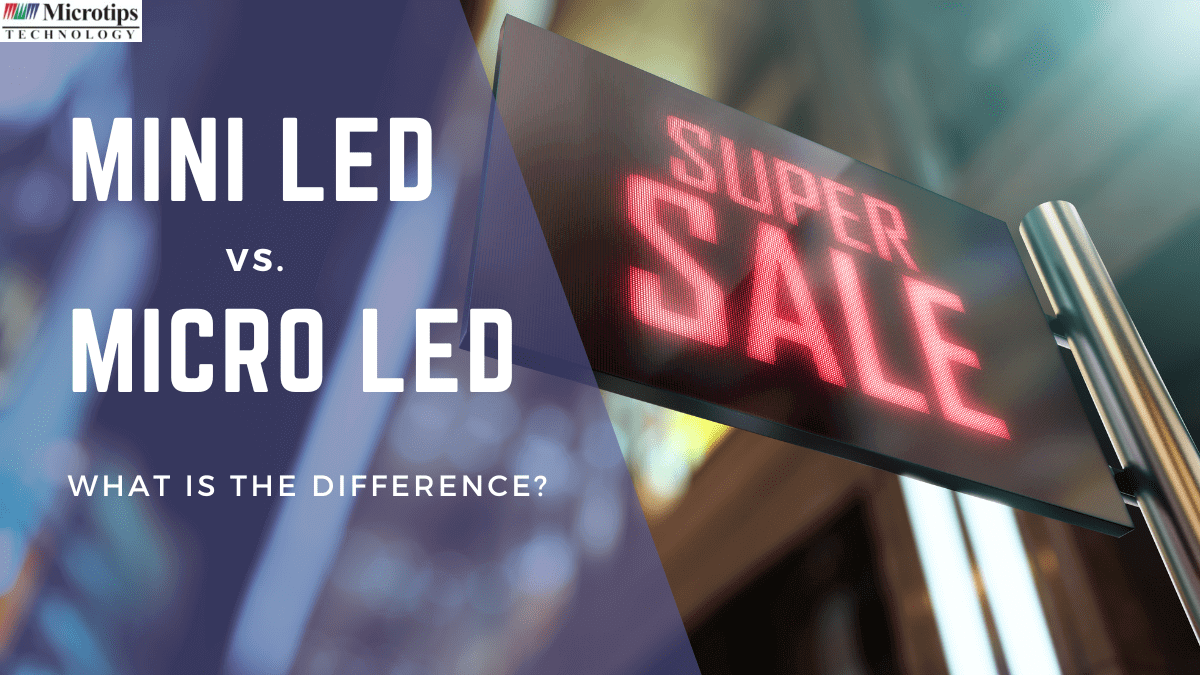The most recent breakthroughs in the LED sector are Mini LEDs and Micro LEDs. Because of their extensive use in smartphones, TVs, displays, laptops, and other electronic devices, these LEDs have a bright future. Their size is the most significant distinction between them. Micro LEDs (100-200 m) are larger than Mini LEDs (100-200 m) (100 m). As a result, both have applications in a variety of sectors.
What Is a Mini LED?
Treating a mini-LED display as if it were a better-LED display is the best way to remember what it is. An LED backlight provides the brightness of an LED display. To see the visuals on the screen, the mini-LED, like LED, requires a backlight.
What Is a Micro LED?
People often confuse the two terms. The main difference is that the former does not have a backlight to illuminate the display. When you consider it, a micro-LED is much closer to an OLED TV than a mini-LED. This is because the OLED does not have a backlight. Instead, it can control the contrast of its pixels.
The Future Of Micro LED Will In The Coming Years
Upstream wafer factories like Epistar, HC SemiTek, etc., companies such as Everlight, Advanced Optoelectronic Technology, Harvatek, and others have invested in Mini LED technology, as have IC designers such as Macroblock, Raydium, and Jasper Display, panel producers such as AU Optronics and Innolux, and digital display makers such as Leyard.
On the one hand, it has been widely reported that Apple is working on its own micro-LED display research, while on the other hand, it has been extensively reported that Samsung is working on its own micro-LED display research. Micro LEDs, according to Apple, have the potential to make future iPhones even slimmer and brighter than the latest-generation organic LED (OLED) displays that have recently supplanted LCD panels.
What Is The Distinction Between Them?
Mini LED and Micro LED are two names that, in theory, signify two different things. Micro LED is a new generation of display technology that uses a matrix of small LEDs to create a display. Each pixel is independently addressed and directed to emit light, similar to OLED (self-emitting). The LED backlight is smaller, thinner, and more evenly distributed, with the LED unit measuring less than 100 micrometers in diameter. Mini LED is a better form of traditional LED backlight and is a transitional technology between traditional LED and Micro LED.

Micro LEDs have a simpler structure and better performance, but mass transmission is the main concern. Miniaturizing LEDs, which demand wafer-level technology, is the issue.4K Micro LED panels, for example, require more than 24.88 million LED chips.
Mini LED has a greater yield rate than Micro LED in the production process. When paired with flexible substrates, mini LED is also suitable for notch design and very curved backlight. Another feature that helps Mini LED devices have better color reproduction is local dimming. Mini LED technology allows LCD panels to support more HDR categories, and Mini LED products can be as compact as OLED gadgets, saving power.
| Parameter | Mini LEDs | Micro LEDs |
|---|---|---|
| Size | 100 to 200 µm | Less than 100 µm |
| Application | LCD backlight, fine pitch display wall | Self-emitting display wall, Micro-projection display wall |
| Number Of LEDs used | More than a thousand LEDs | Millions of LEDs |
| Energy Consumption | Medium | Low |
| Luminous Efficiency | Medium | High |
| Viewing Angle | Medium | High |
| Cost | Less | High |
| Mass Production | Less difficult | High |
Concluding Thought
To summarise, both the mini-LED and the micro-LED are excellent purchases, but it all comes down to your purchasing criteria. To purchase a micro-LED, you will almost certainly need a ridiculous amount of cash. Micro LED, on the other hand, is the way to go if money isn’t an issue and you want the most incredible TV available. A prominent reason why many people prefer mini-LEDs is because of this. It’s even the greatest LED display currently available.

